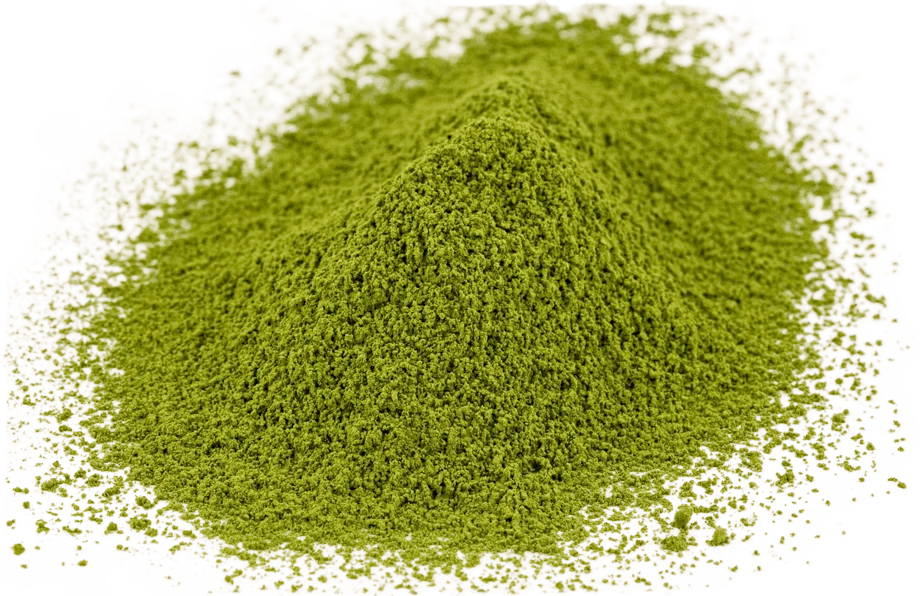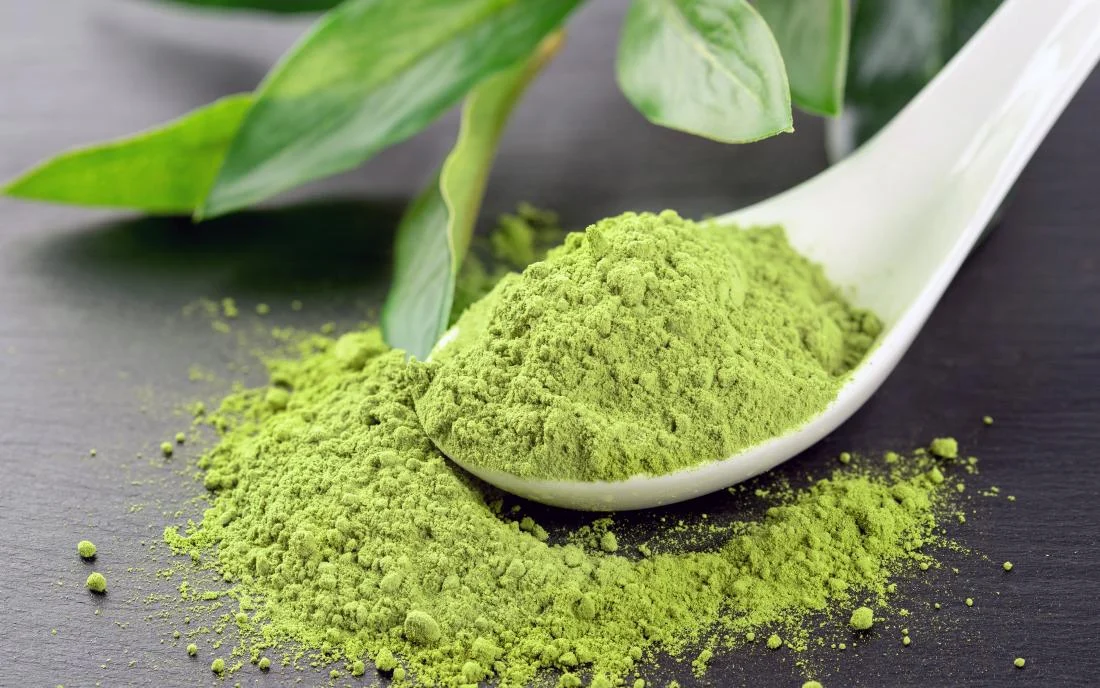From a revered element of ancient Japanese tea ceremonies to a global wellness phenomenon, matcha has taken the world by storm. You’ve seen it in vibrant green lattes, nutrient-packed smoothies, and decadent desserts. But when you decide to bring this superfood into your own kitchen, you’re hit with a wall of confusing terms: ceremonial, culinary, Uji, first harvest… What do they all mean?

If you’ve ever felt overwhelmed trying to choose a matcha powder, you’re not alone. The fear of spending good money on a product that ends up bitter, dull, and disappointing is real.
This guide is here to change that. We’ll demystify the world of matcha, transforming you from a curious beginner into a confident connoisseur. We’ll teach you exactly how to spot high-quality matcha, understand the different grades, and prepare it perfectly every time.
What is Matcha and Why is Everyone Talking About It?
First, let’s clear up a common misconception: matcha isn’t just powdered green tea. It’s a far more sophisticated and potent powerhouse, thanks to a unique cultivation and production process that has been perfected over centuries.
More Than Just Green Tea: The Unique Process of Making Matcha
Unlike regular green tea, where leaves are steeped in water and then discarded, with matcha, you are consuming the entire leaf. This is made possible by a meticulous process:
- Shade-Grown: About 3-4 weeks before harvest, the tea plants (Camellia sinensis) are covered to block out direct sunlight. This forces the leaves to overproduce chlorophyll (giving matcha its signature vibrant green color) and L-theanine, an amino acid responsible for its unique flavor and calming effects.
- Selective Harvest: Only the youngest, most tender leaves at the top of the plant are hand-picked.
- Steaming & Drying: The leaves are briefly steamed to halt oxidation, preserving their color and nutrients, then carefully dried.
- De-stemming & De-veining: The dried leaves are processed to remove stems and veins, leaving only the pure leaf flesh, known as “tencha.”
- Stone-Grinding: The tencha is then slowly stone-ground by granite mills into an ultra-fine powder. It can take up to an hour to grind just 30 grams of matcha.
Calm Energy in a Cup: The Magic of L-Theanine and Caffeine
This is where matcha truly shines and sets itself apart from coffee. While it does contain caffeine, it’s delivered to your body in a completely different way.
Matcha is rich in L-theanine, an amino acid that promotes relaxation and reduces stress without causing drowsiness. When combined with caffeine, L-theanine creates a state of “calm alertness.” You get a sustained energy boost that enhances focus and concentration, but without the jitters, anxiety, and inevitable “crash” associated with coffee. It’s the perfect fuel for a productive morning or a focused afternoon.
The Most Important Choice: Ceremonial vs. Culinary Grade Matcha
Understanding the difference between these two grades is the single most important step in choosing the right matcha for you.
Ceremonial Grade: For the Purest Matcha Experience
As the name suggests, this is the highest quality matcha, intended for the traditional Japanese tea ceremony. It’s made for one purpose: to be whisked with hot water and enjoyed on its own.
- Harvest: Made from the youngest, most delicate “first harvest” leaves.
- Taste: Exceptionally smooth, naturally sweet, with a rich, savory “umami” flavor and virtually no bitterness.
- Color: A brilliant, almost electric shade of green.
- Best For: Drinking straight (as usucha – thin tea, or koicha – thick tea).
Culinary Grade: Your Go-To for Lattes, Smoothies, and Baking
Culinary grade matcha is designed to be mixed with other ingredients. It’s produced from later harvest leaves, which gives it a more robust and slightly more bitter flavor profile that can stand up to milk, sweeteners, and other strong flavors.
- Harvest: Typically from second or third harvest leaves.
- Taste: Bolder, less nuanced, and slightly more astringent than ceremonial grade.
- Color: A healthy green, but less vibrant than its ceremonial counterpart.
- Best For: Matcha lattes, smoothies, ice cream, and baking.
The Verdict: Which Grade Should You Buy?
The answer is simple: it depends on your intended use.
- For drinking straight: Always choose ceremonial grade. Using culinary grade for this will result in a bitter, unpleasant experience.
- For lattes and recipes: Culinary grade is the more economical and appropriate choice. Its stronger flavor won’t get lost when mixed. That said, a high-quality culinary or a more affordable ceremonial grade can make an exceptionally luxurious latte.
How to Spot High-Quality Matcha: A 4-Point Checklist for Beginners
Forget the fancy labels for a moment. True quality can be judged by what’s inside the tin. Use this checklist to become your own matcha expert.
1. Color: Look for a Vibrant, Electric Green
This is your first and most telling clue. High-quality matcha has a brilliant, vivid green color. This is a direct result of the high chlorophyll content developed during the shade-growing process.
Red Flag: Avoid any matcha that is a dull, yellowish, or brownish-green. This indicates it’s either a low-quality product made from older leaves, has been improperly processed, or is old and oxidized.
2. Origin: Why Japan ese Matcha is the Gold Standard
While matcha is produced in other countries, Japan is universally recognized as the source of the world’s best. The climate, soil, and centuries of expertise result in a superior product. Look for packaging that clearly states “Product of Japan.”
The most famous regions include:
- Uji (near Kyoto): The historical birthplace of matcha, renowned for producing the highest-end ceremonial grades with deep, sweet, and umami-rich profiles.
- Nishio (in Aichi): Another top-tier region known for producing a balanced, classic matcha flavor.
- Kagoshima (in Kyushu): A leading region for organic matcha production, often with a bold and refreshing taste.
3. Texture: It Should Feel Like Silk
Properly stone-ground matcha is incredibly fine, with a consistency similar to eyeshadow or cornstarch. The particle size is just 5-10 microns. This fine texture allows it to suspend smoothly in water rather than dissolving.
Quick Test: Rub a small amount between your fingers. It should feel silky and smooth. If it feels coarse or gritty, it was likely machine-ground and is of lower quality.
4. Taste & Aroma: Sweet, Grassy, and Full of “Umami”
Open the tin and take a sniff. Good matcha should have a fresh, vegetal, and slightly sweet aroma. The taste is where the magic happens. High-quality matcha is defined by “umami,” the fifth basic taste, which translates to a pleasant savory or brothy flavor. It should have a smooth, creamy mouthfeel and a sweet, lingering finish.
Red Flag: Overwhelming bitterness is the clearest sign of poor quality. While a hint of astringency can be present (especially in culinary grades), it should never be the dominant flavor.
Our Top Picks: The Best Matcha Tea Powders in 2025
After extensive research into quality, sourcing, and user reviews, here are our recommendations.
(Disclaimer: This section is for illustrative purposes. Always conduct your own research based on the quality checklist above.)
- Best Overall Ceremonial Matcha: Ippodo Tea – Sayaka A benchmark for quality from a legendary Kyoto-based company. It’s incredibly smooth, bursting with umami, and creates a beautiful foam. Perfect for those who want to experience what true ceremonial matcha tastes like.
- Best for Lattes (Premium Culinary): Jade Leaf – Culinary Matcha This is a go-to for a reason. It has a strong enough flavor to shine through milk and sweeteners, creating a balanced and delicious latte. It’s organic and offers fantastic value.
- CHTNature: – Ceremonial Grade Organic Matcha Sourced from organic farms in the Uji region, Encha offers a pure, vibrant, and smooth experience. It’s a fantastic choice for the health-conscious consumer who doesn’t want to compromise on taste.
- Best for Beginners (Starter Kit): MatchaKari – Ceremonial Matcha Set If you’re just starting, a kit is the way to go. This one typically includes high-quality ceremonial matcha, a traditional bamboo whisk (chasen), a scoop (chashaku), and a sifter, giving you everything you need to begin your ritual.
How to Prepare the Perfect Bowl of Matcha (The Traditional Way)
Whisking up a bowl of matcha is a mindful ritual. Follow these steps for a perfect, lump-free cup every time.
What You’ll Need:
- 1-2 tsp (2-4g) of ceremonial matcha powder
- ~2.5 oz (75ml) of hot water, not boiling (~175°F / 80°C)
- A matcha bowl (chawan)
- A bamboo whisk (chasen)
- A matcha scoop (chashaku) or a teaspoon
- A small sifter (optional, but highly recommended)
Step-by-Step Instructions
- Warm the Bowl: Pour some hot water into your bowl to warm it up. Discard the water and dry the bowl thoroughly.
- Sift the Matcha: Place your sifter over the bowl and measure 1-2 scoops of matcha into it. Gently tap the sifter to break up any clumps and ensure a smooth texture. This is the secret to a frothy, non-lumpy bowl.
- Add Hot Water: Pour the ~175°F (80°C) water into the bowl. Using boiling water will scorch the delicate tea leaves, resulting in a bitter taste.
- Whisk Vigorously: Hold the bowl firmly with one hand. With the other, whisk the matcha by rapidly moving your wrist in a “W” or “M” pattern. Don’t press the whisk into the bottom of the bowl. Continue for about 15-20 seconds until the matcha is dissolved and a layer of fine foam covers the surface.
- Enjoy Immediately: Drink your matcha straight from the bowl while it’s fresh and warm.
No Whisk? No Problem!
While a bamboo whisk is traditional and creates the best foam, you can still make a great cup of matcha without one. The key is to break up the clumps. Use an electric milk frother, a blender, or even a mason jar (just add matcha and water, seal, and shake vigorously).
Frequently Asked Questions (FAQ)
Why is my matcha bitter? The most common culprits are: 1) Water that is too hot (boiling water will burn it), 2) Using a low-quality, culinary-grade matcha for straight drinking, or 3) Using too much powder for the amount of water.
How much caffeine is in matcha? A typical serving (1 tsp of powder) has about 60-70mg of caffeine. This is more than green tea (~30mg) but less than a standard cup of coffee (~95mg). However, thanks to L-theanine, the energy is released slowly and steadily.
How should I store my matcha powder? Matcha is sensitive to light, heat, and air. Once opened, store it in its airtight container in the refrigerator. This will preserve its freshness, color, and flavor. Aim to use it within 1-2 months of opening.
Is expensive matcha worth it? For drinking straight, absolutely. The difference in smoothness, color, and umami flavor between a $15 tin and a $40 tin is significant. For lattes and baking, a more affordable, good-quality culinary grade is perfectly sufficient.
Can I drink matcha every day? Yes, in moderation. One to two servings per day is a healthy amount for most people to enjoy its benefits without consuming too much caffeine.
Your Matcha Journey Begins Now
Choosing the best matcha tea powder doesn’t have to be a game of chance. By arming yourself with knowledge—understanding the grades and learning to spot the four key signs of quality (Color, Origin, Texture, Taste)—you can confidently select a product you’ll truly love.
Whether you’re seeking a moment of calm focus, a healthy energy boost, or a delicious new ingredient for your culinary creations, the perfect matcha is out there waiting for you.
What’s your favorite way to enjoy matcha? Let us know in the comments below!



